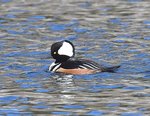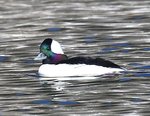 Narrowsburg
NarrowsburgLight Rain Fog/Mist, 43°
Wind: 8.1 mph
 Narrowsburg
NarrowsburgThe coming of spring brings to thought a diverse variety of events to different people. For some of us, the first thing to come to mind is the appearance of daffodils popping out of the ground. For …
Stay informed about your community and support local independent journalism.
Subscribe to The River Reporter today. click here
This item is available in full to subscribers.
Please log in to continue |



The coming of spring brings to thought a diverse variety of events to different people. For some of us, the first thing to come to mind is the appearance of daffodils popping out of the ground. For others, the song of spring peepers calling in the early evening from wetlands and marshes. For bird watchers, spring is the return of a variety of species that wintered in warmer climes. Spring is when birds are on the move.
The Delaware River is not only a good place to spot eagles, but in the spring, it’s a place where a variety of waterfowl can be spotted as they move from wintering grounds to their summer breeding areas. Waterfowl such as the common loon may be seen during springtime on the river and lakes for a few short weeks before they head up to northern summer territories. Wood ducks and hooded mergansers attract looks with their colorful plumage. Many waterfowl have their breeding territory in the region, promising tiny ducklings navigating the river currents with their parents in a few weeks.
The best spots for waterfowl watching are usually flat water areas of the river, but species such as the common merganser, for example, can frequently be seen riding through the rapids. With most ducks, the male is the more colorful and distinct, and easier to identify, but the females have unique characteristics that distinguish between species; waterfowl usually are in small groups and you are likely to see both sexes. Grab your binoculars and check out this spring’s “waterfowl Riverdance.”
Comments
No comments on this item Please log in to comment by clicking here